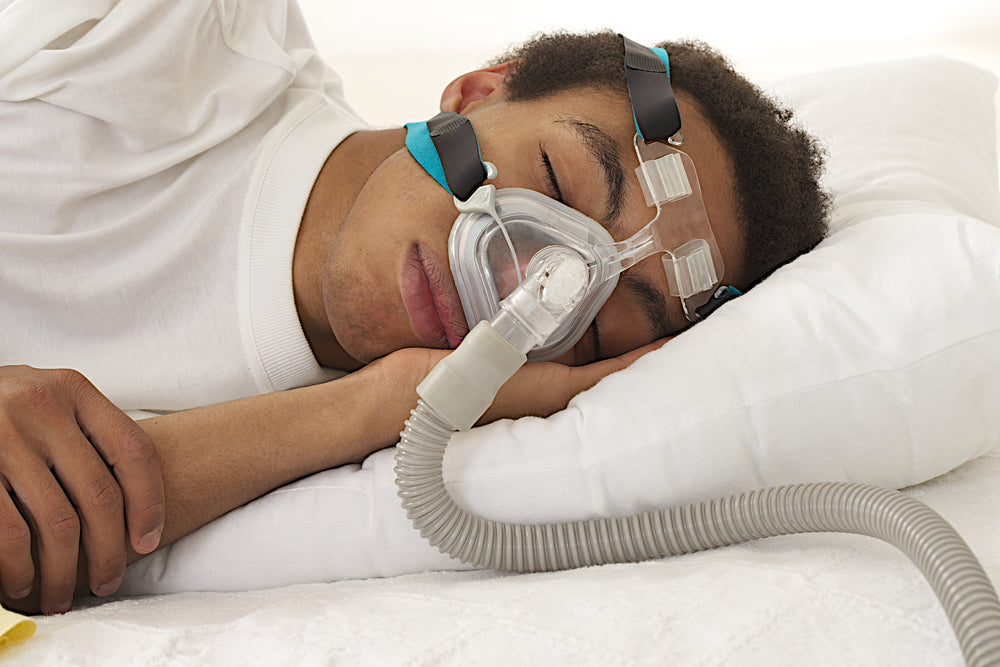It’s a very common struggle to adjust to sleeping with your CPAP mask and equipment. Rest assured that you are not alone in the anxiety and frequent discomfort that comes from learning how to adapt to sleeping with your CPAP, but we’re here to give you some tips on adapting to your new CPAP easily and on your own terms.
Get Your Sleep On Track
We’ve said it before, and we’ll say it again: developing a consistent bedtime routine is imperative to healthy sleep. While getting the recommended eight-hours of sleep is important, there are so many distractions that can inhibit us from falling and staying asleep. Here are a few important ways to craft a good bedtime routine that lets your brain know it’s time to turn off.
- Try to go to sleep and wake up at the same time everyday—even on weekends
- Avoid napping throughout the day
- If you exercise, do it in the morning
- Avoid any caffeinated beverages after 4 pm
- Develop a clear routine prior to sleeping (shower, oral hygiene, close electronics, etc.)
- Avoid as much “blue light” as possible from screens and other devices
For CPAP newbies trying to adjust to their treatment, following these simple rules will make falling asleep much easier and will likely shorten your adjustment time.
Wear Your CPAP While You’re Awake
One of the best ways to get used to your CPAP mask is to wear it while you’re awake. If you simply throw it on before you try to fall asleep, you’re more likely to feel uncomfortable and even claustrophobic. First, we suggest wearing the CPAP mask while you’re awake and upright. Wearing it while watching TV, playing on the computer, or reading a book will give you a better sense of the fit so you can adjust it for maximum comfort. Being alert while wearing it will give you more control over the mask, letting you wear it rather than having it wear you. It’s also important to remember that there are several different kinds of CPAP masks for you to choose from and one may be better suited for your face or specific treatment. Be sure to talk to your patient care representative about your CPAP mask options.
Adjust to Your CPAP Settings
It’s very common to feel uncomfortable wearing the mask for the first time, especially with your air pressure settings on. The physician who reviews your sleep study will prescribe a specific air pressure setting for your CPAP based on your results. These settings can vary and can be challenging to adjust to. Two steps that can make adjusting to your CPAP mask more effective are customizing your adjustment settings when you lay down and utilizing your CPAP’s “ramp” feature.
After you’ve become more comfortable wearing your CPAP mask while awake and upright, you’ll want to try wearing it while laying down, as the contours of your face will change from one position to another. Once you find the perfect fit, you’ll want to test the seal of the mask by turning the air pressure on. This will be another test because you may find your air pressure settings difficult to deal with while trying to fall asleep. If this is the case, be sure to check that your CPAP has a “ramp” setting. This will start the air pressure out low and gently increase over a short period of time, allowing you to fall asleep before the full pressure setting goes into effect.
Keep Your CPAP Clean
While it used to be more common, CPAP machines can, in rare cases, elicit an allergic reaction from the wearer. This used to be because some CPAP masks were made using latex, but this is exceedingly rare and only really happens if you purchase an older CPAP machine. Most, if not all, newer CPAPs will use silicone or gel in place of latex. If you are going to have an allergic reaction, it will happen the first night you wear the mask, not later on in your CPAP treatment.
Many who believe they are experiencing an allergic reaction well into their treatment are actually experiencing side effects of poor CPAP hygiene. It is vital that you maintain a clean CPAP mask and hose by gently cleaning them every other day, or once a week at the very least. Breathing into your mask for several hours a night combined with the built-in humidification system will grow bacteria over time if not cleaned properly and often. This can result in a skin infection or other kind of side effect. Another way to prevent poor side effects is by purchasing replacement parts regularly to maintain quality of treatment.
Getting CPAP treatment will ultimately make your life better by giving you the healthy, quality sleep that you need. In the long term, CPAP treatment can improve your quality of life and prevent you from incurring some of the health risks associated with untreated sleep apnea. By maintaining a positive attitude about your CPAP machine and making sure you adjust to it on your terms, it will become a positive part of your life and get you sleeping better than ever before.

